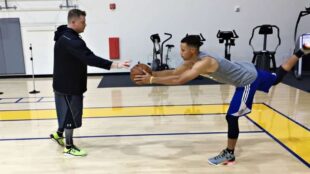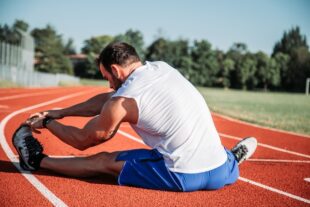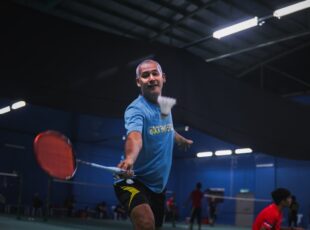Innovative Training Methods Used by Top Athletes in 2024

In 2024, the landscape of athletic training has evolved remarkably, with cutting-edge technologies and innovative methods becoming integral to the routines of top athletes. These advancements not only optimize performance but also help in injury prevention and recovery. Here’s a look at some of the most groundbreaking training methods being utilized by elite athletes today.
1. AI-Driven Performance Analytics
Artificial intelligence (AI) has revolutionized how athletes train and perform. By analyzing vast amounts of data, AI can provide insights into performance metrics, enabling athletes to fine-tune their training regimens.
“AI allows us to break down every aspect of an athlete’s performance, from their running gait to their shooting accuracy,” says Dr. Emily Rodriguez, a sports scientist at Stanford University.
“With AI, we can predict and prevent injuries by identifying patterns that lead to overuse or strain,” adds Coach John Miller, a professional trainer for Olympic athletes.
2. Virtual Reality (VR) Training
Virtual Reality has become a powerful tool for athletes, providing immersive training experiences that were previously unimaginable.
“VR allows athletes to simulate game scenarios and practice their responses in a controlled environment,” explains Mark Lewis, a VR specialist working with NBA teams.
“The ability to replay and analyze virtual drills helps athletes develop muscle memory and improve their decision-making skills,” notes Sarah Kim, a VR training consultant.
3. Personalized Nutrition Plans
Advancements in nutrition science have led to highly personalized diets tailored to the specific needs of athletes. These plans are designed based on genetic information, metabolic rates, and performance goals.
“We use genetic testing to determine the optimal diet for each athlete, ensuring they get the right balance of nutrients,” says nutritionist Dr. Carla Evans.
“Personalized nutrition helps athletes maintain peak performance and recover faster from workouts,” comments Chef Antonio Garcia, who specializes in athlete meal prep.
4. Wearable Technology
Wearables have become ubiquitous in the training regimens of elite athletes. These devices track a wide range of metrics, from heart rate and sleep patterns to muscle activity and hydration levels.
“Wearables give us real-time data that helps adjust training loads and avoid overtraining,” states fitness coach Laura Hernandez.
“The feedback from these devices allows athletes to make informed decisions about their training intensity and recovery strategies,” adds Dr. Michael Lee, a sports physician.
5. Cryotherapy and Hyperbaric Oxygen Therapy
Recovery is just as important as training, and advanced recovery methods like cryotherapy and hyperbaric oxygen therapy are becoming standard practice among top athletes.
“Cryotherapy helps reduce inflammation and speed up recovery after intense training sessions,” explains David Borg from multiplay 81.
“Hyperbaric oxygen therapy enhances oxygen delivery to tissues, promoting faster healing and recovery,” says Dr. Ana Martinez, a specialist in sports medicine.
6. Biomechanical Analysis
Biomechanical analysis involves the detailed study of movement patterns using advanced imaging techniques. This analysis helps in improving technique and preventing injuries.
“By analyzing an athlete’s biomechanics, we can identify inefficiencies and correct them,” says Dr. Jason Patel, a leading biomechanist.
“This technology allows us to tailor training programs that enhance performance while minimizing the risk of injury,” comments Coach Rebecca Thompson.
7. Mental Conditioning and Mindfulness
Mental strength is crucial for athletic success, and methods like mindfulness and mental conditioning are now integral parts of training programs.
“Mental conditioning helps athletes stay focused and manage stress during competition,” says sports psychologist Dr. Lisa Carter.
“Incorporating mindfulness practices into training routines enhances overall well-being and performance,” notes meditation expert Tom Walker.
Conclusion
The integration of these innovative training methods has set a new standard for athletic preparation and performance. As technology continues to advance, the potential for further improvements in athletic training is limitless. The key to success for athletes in 2024 and beyond lies in their ability to embrace and adapt to these cutting-edge techniques, ensuring they remain at the top of their game.
The Future of Athletic Training
Looking ahead, the continuous evolution of training methods holds great promise for athletes. Innovations such as AI and machine learning will further refine performance analytics, providing even more precise insights. Advances in wearable technology will offer deeper integration with real-time health monitoring, while breakthroughs in nutrition science will lead to even more personalized dietary plans. Additionally, the expanding field of neurofeedback could revolutionize mental conditioning, helping athletes achieve peak cognitive performance. As these technologies develop, they will undoubtedly unlock new levels of human potential in sports.
Through AI-driven analytics, VR simulations, personalized nutrition, wearable technology, advanced recovery methods, biomechanical analysis, and mental conditioning, athletes are achieving levels of performance previously thought unattainable. These advancements not only enhance their physical capabilities but also contribute to their overall health and longevity in their respective sports.






